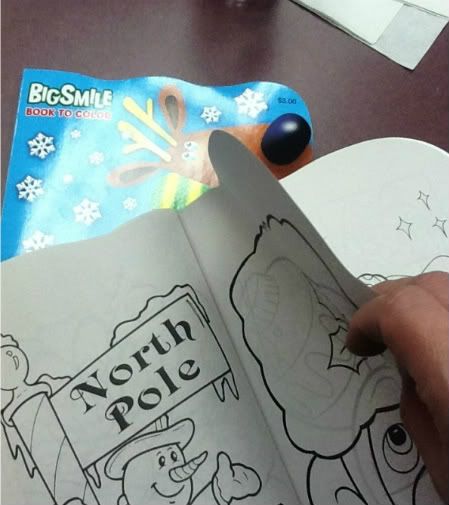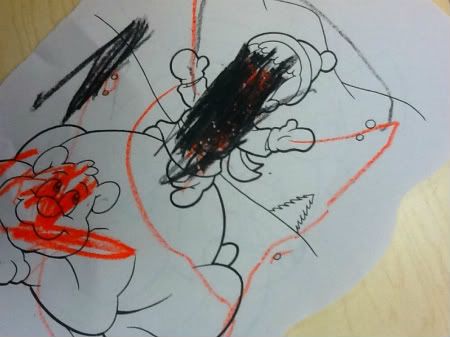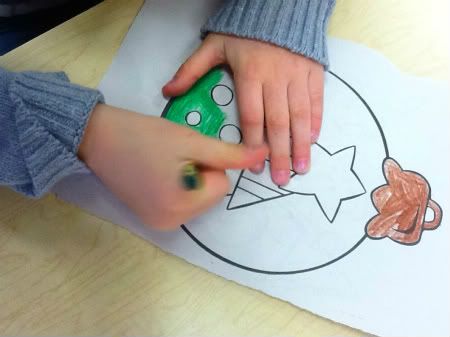From time to time you may want to collect work samples demonstrating your students' fine motor control. I keep portfolios for each of my Super Stars, with samples of their drawing, writing, coloring, and cutting from their first week of school, each mid-quarter, and quarter/semester. Samples can appear both formal and informal: a cutting page with specially drawn lines to demonstrate control of scissors and tracking, or a sweet "I love you Teacher" drawing gifted to me on some special morning.
Simplicity ~works~: I pull pages from a coloring book for a "quick-check" coloring assessment that students can work on as a filler activity between lessons, or a center of its own on an indoor-recess-day:

Most coloring books have illustrations on both sides of each page, so it's easy to have my Stars color one side of the page, have me date it, and tuck it away until the end of the quarter when they can color the back.



Holiday coloring books are on clearance after Christmas, making them very affordable. My Stars don't tend to try to "copy" one another as no one ends up with the same picture to color, and they appreciate the non-worksheet feel of the activity. Using coloring book pages saves on your copying budget/allotment (if you have one) as parents are often willing to donate coloring books their children no longer use, and students tend to try to color more neatly than they did previously when they see their *flip side.*
Win win winwinwin.

*I love the words and phrases my students use! Imaginate: used as a verb, "Mrs. Sommerville, I'm going to imaginate these blocks into a castle, okay?" The "flip side" is the back of any page, because to see it, you have to flip it to the other side!*
*****
~ You can also use coloring books for sight word practice! Instead of coloring by numbers, shapes, letters, or color words, choose a simple illustration (not too many small details) and write sight words on each section of the picture.
~ Instructables shares How To Make a Coloring Book. Wouldn't your students love to color pictures of themselves?

Glad I found your site - I'm a new twitter follower :)
ReplyDeleteAndrea
www.nodoubtlearning.blogspot.com
I needed the reminder to file more work samples. Thanks!!
ReplyDeleteColoring is great for the imagination! even when they can't get it within the lines!
ReplyDelete